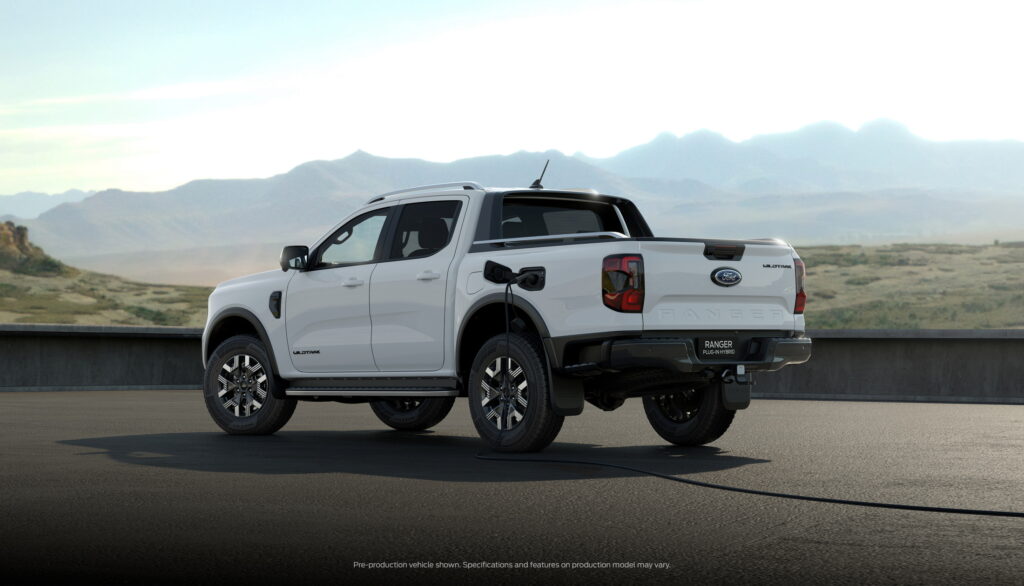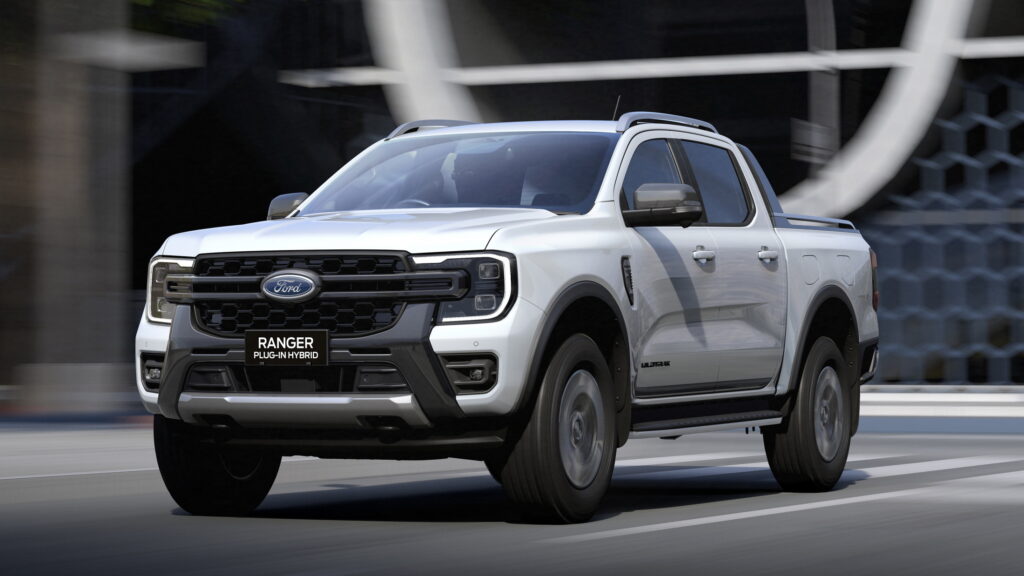Ford shared some details about the upcoming plug-in hybrid version of its latest Ranger pickup truck. However, back at home in the U.S., it has no intention of offering the truck to buyers because it believes they already have enough hybrids options.
Set to go on sale in 2025, Ford said today that the Ranger PHEV has been designed “especially with the European customer in mind.” Indeed, the mid-size pickup is a favorite in markets with smaller roads than North America.
However, since the U.S. version of the Ranger is now largely the same as the European model, there was some hope that the PHEV might be sold here, too. That hope has been dashed, according to a report from Car and Driver that cites a Ford spokesperson as saying the electrified pickup won’t make it to U.S. dealers.
Read: 2025 Ford Ranger Plug-In Hybrid Revealed With Over 28 Miles Of EV-Only Range

The spokesperson said that Ford believes it offers enough alternatives to the Ranger PHEV with the Maverick hybrid and the recently updated F-150. However, the decision is a little noteworthy since the automaker stated that it wants to double the number of hybrid F-150s it sells in the coming years.
Ford’s decision may come as a disappointment to some consumers who were interested in the Ranger PHEV. It pairs a 2.3-liter four-cylinder engine with an electric motor and will deliver “more torque than any other Ranger,” Ford said, which means that it will make more than 443 lb-ft (600 Nm) of torque.
Ford adds that it is targeting 7,716 lbs (3,500 kg) of towing capacity with the new model, and that it is aiming for it to be able to go 28 miles (45 km) on electric power alone. Although the battery’s size remains unknown, the Ranger PHEV will come with Ford’s ProPower Onboard system that adds plugs to the bed to allow owners to run tools, appliances, and other electric devices.
Set to enter production in late 2024, the Ford Ranger PHEV will go on sale as a 2025 model year vehicle in Europe, Australia, and New Zealand.



















